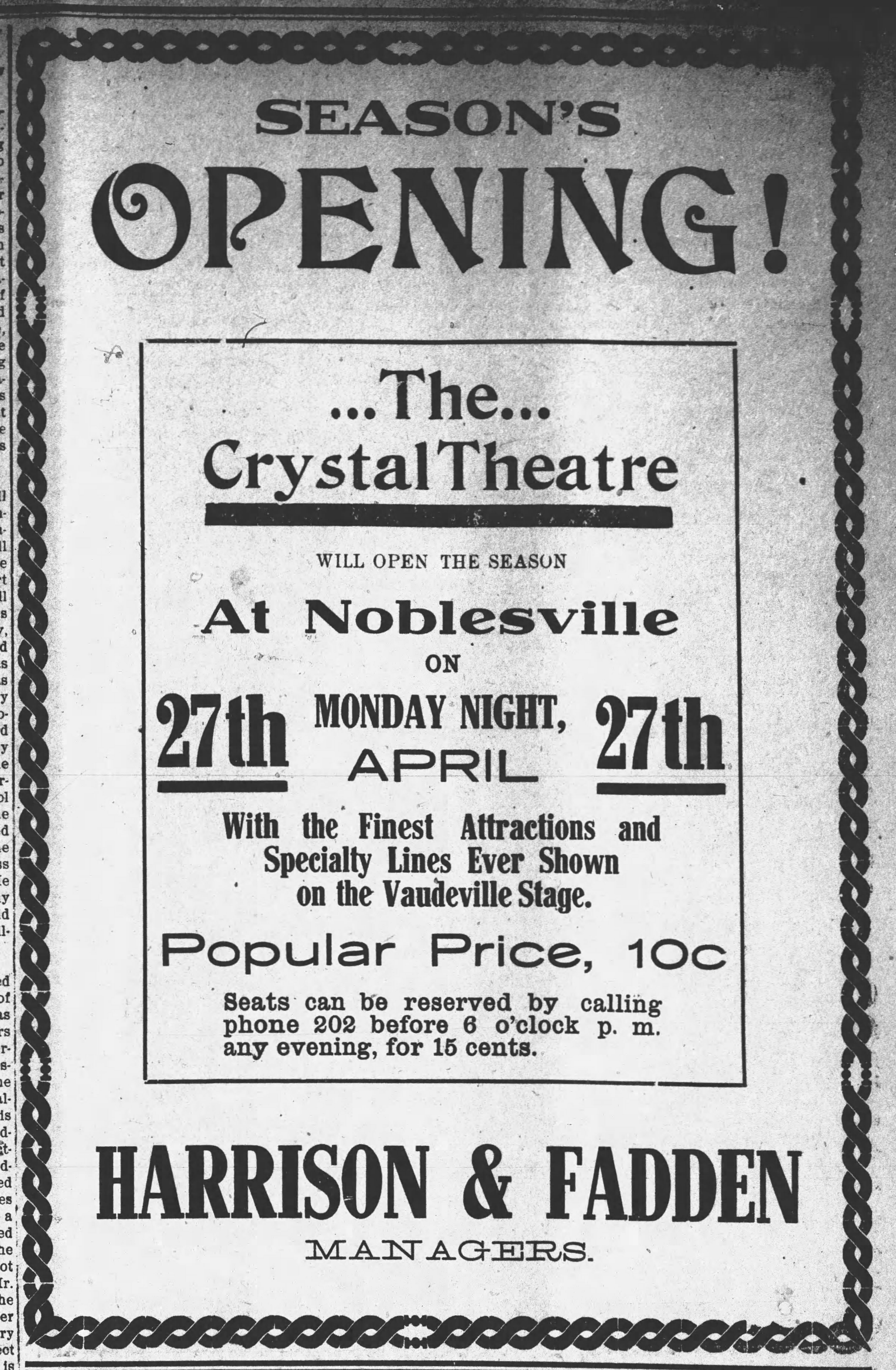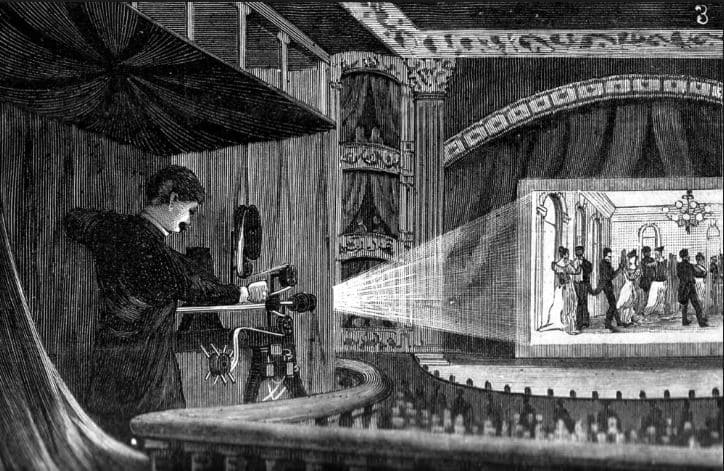Noblesville Nickelodeons
By: David Heighway, Hamilton County Historian
Long before the television network Nickelodeon existed, there were real places that were given this name. These were small theaters where it cost five cents to see the show, usually a silent film with some live entertainment. Some evolved into vaudeville houses with a full set of performers. Noblesville had a few that flourished between 1906 and 1909. They were sometime disapproved of, but were a success with a public that was hungry for cheap entertainment.
The first one that appeared was the Home Amusement Company which opened in December of 1906 on the north side of the square. The next one was the Crystal Theater which opened in May of 1907 on South 8th street. It was a temporary structure with wooden sides and a canvas top, and could be dismantled and put away in winter. This was followed by the Exhibit which opened September of that year on the south side of the square. The Vaudette opened by December replacing the Home Amusement Company – both were run by John H. Wise, whom I’ve discussed before.
These theaters showed films like “The Trainer’s Daughter, or, A Race for Love”, “An Arcadian Elopement”, and “The Roué’s Heart”, directed by D. W. Griffith with Mack Sennett in the cast. The films were short, (much like a modern YouTube video), and, at one point, the theaters were changing them every night. Some of these films can be seen reproduced online, but many of them, if not most, are gone. The films had live musical accompaniment and the theaters would show “illustrated songs” – magic lantern slides of music and lyrics that let the audience sing along.
 A person who appeared regularly onstage was Charles Watts, a hometown boy who became a professional acrobat performing under the name of Charles Gillette. Eva Henderson, a singer, was another frequent performer. A typical vaudeville bill would be much like the one that appeared on July 11, 1908, at the Crystal: C. R. Rey, banjoist; Davis and Moore, rube monologue; The Connors, novelty acrobats; Chas. Murry, blackface; Connors, Kennedy, and Connors, comedy sketch; Mrs. Dodd, soloist; and the Crystalscope. I haven’t been able to find out what a “Crystalscope” was, but it was a feature in some Midwestern theaters at this time.
A person who appeared regularly onstage was Charles Watts, a hometown boy who became a professional acrobat performing under the name of Charles Gillette. Eva Henderson, a singer, was another frequent performer. A typical vaudeville bill would be much like the one that appeared on July 11, 1908, at the Crystal: C. R. Rey, banjoist; Davis and Moore, rube monologue; The Connors, novelty acrobats; Chas. Murry, blackface; Connors, Kennedy, and Connors, comedy sketch; Mrs. Dodd, soloist; and the Crystalscope. I haven’t been able to find out what a “Crystalscope” was, but it was a feature in some Midwestern theaters at this time.
The live theater could be unpredictable. There was some excitement in November of 1908 when magician Donn V. Smythe was performing at the Vaudette. He did a trick with a gun that fired blanks and managed to severely burn his hand when the gun went off accidentally.
There was trouble with the theaters in April 1908 – the city passed an ordinance for an annual license fee of $25. However, Leonard Wild declared that he didn’t have to pay it for the Wild Opera house. He had been given a special ten-year license for $1 when he first opened in 1895, when the city was eager to have a legitimate theater. The license was extended in 1905, so Wild claimed immunity from the ordinance. Representatives from the Vaudette, the Exhibit, and the Crystal went before the Common Council and requested that all theaters be required to pay equally. The council ordered the City Clerk to collect the fee from Mr. Wild.
For a while, these places generated a lot of excitement. John Wise painted a new curtain for stage of the Vaudette in November of 1909. He did a scene showing 9th street at the southeast corner of square, which showed the signs for the Citizens State bank (now Copper Still) and the Old Corner Drug Store (now Corner Cottage). The newspaper said that it was good job for a first time painter.
However, after 1909, there isn’t any mention of them in the local newspapers. Films had become longer running with multiple reels and going to the movies became an event. Larger movie houses were needed and the films were taken over by the Olympic Theater, which later became the Diana, and the American Theater, which later became the Logan Theater. The Wild Opera House was still running movies with their live shows. The nickelodeons had served their purpose and the public moved on.
